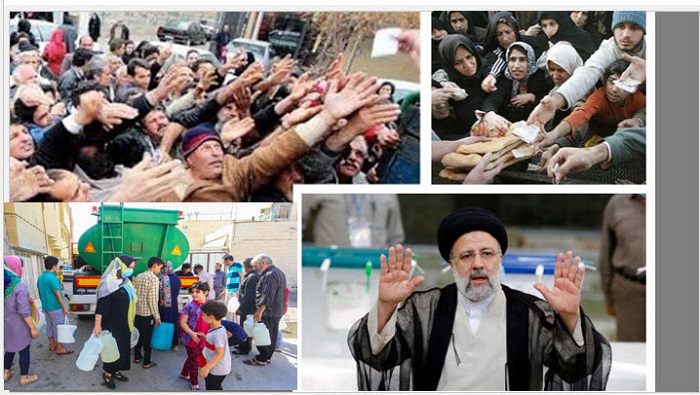
As Iran grapples with a devastating economic crisis brought on by rampant state corruption, nearly 20 million citizens find themselves in dire circumstances, lacking basic life necessities. The situation has become so grave that state officials and media are openly recognizing the country’s financial meltdown.
Ali Agha-Mohammadi, a member of the regime’s Expediency Council, disclosed that around 19.7 million Iranians are deprived of essential services such as housing, employment, education, health, food, and clothing. This alarming fact was corroborated by Behrouz Mohebi, a member of parliament, who identified nearly 3 million households living in absolute poverty.
Iran’s economic crisis worsens every day, despite its rich resources. Authorities’ self-boasting rhetoric prevents them from admitting that they are overwhelmed by economic pressures and face an explosive society.#IranRevoIution https://t.co/hvqGmZ1RNY
— NCRI-FAC (@iran_policy) April 10, 2023
State-affiliated economist, Hossein Raghfar, shed light on the extent of this crisis, stating, “The poverty and sufferings of the people are deeper than anyone can understand. The situation is worse than the figures presented.” He highlighted the stark reality of the escalating number of people living below the absolute poverty line.
This decision further illustrates the extent of corruption, as those with the means to contribute more are spared, leaving the burden to those who can least afford it.

“The people who have to stabilize the tax are the same people who have to pay the tax, and as a rule, this will not happen in the country, so with such a device, the current state of the income distribution cannot be organized,” Raghfar observed, highlighting the untenable tax situation.
The Supreme Leader’s 2004 “privatization plan” has not only intensified the IRGC’s economic dominance but has also blocked any potential economic progression. His and the IRGC’s foundations act as the primary conduits for the country’s financial resources, draining the wealth of the nation into their own pockets.”To realize economic growth, certain institutions should be removed from the economy,” Raghfar noted, insinuating a need for structural change.
However, the current conditions have sparked a wave of dissent, with citizens identifying the regime as the root cause of their sufferings.The nationwide uprising was a clear manifestation of this sentiment, largely fueled by the country’s financial crisis and the regime’s refusal to confront the issues. Citizens are calling for change, chanting, “Poverty, corruption, and high prices – we shall continue until regime change.”
Raghfar’s advice to his peers amidst the growing unrest: “People’s wishes should not be ignored. We need fundamental changes in the political structure of the country.” The message is clear: without significant reforms and greater economic inclusivity, Iran’s societal fuse will continue to shorten.
 MEK Iran (follow us on Twitter and Facebook), Maryam Rajavi’s on her site, Twitter & Facebook, NCRI (Twitter & Facebook), and People’s Mojahedin Organization of Iran – MEK IRAN – YouTu
MEK Iran (follow us on Twitter and Facebook), Maryam Rajavi’s on her site, Twitter & Facebook, NCRI (Twitter & Facebook), and People’s Mojahedin Organization of Iran – MEK IRAN – YouTu







